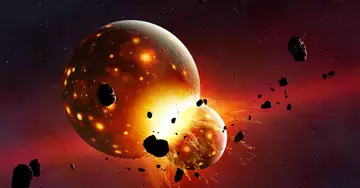As the collapse of the Terra ecosystem enters its final, definitive phase, signs of the real-world devastation caused by the flawed virtual project are unmistakable. On social media and forums, former LUNA supporters report great loss, despair, and hopelessness. There are second-hand reports of a number of suicides and suicide attempts.
It is a sobering moment for those of us involved in cryptocurrencies. I've spent a lot of time over the past two years pointing out the absurdities of the seething crypto market (including predicting the failure of Luna), but I'm still a bit shocked at how exposed the civilian population has been to one of the industry's most experimental projects. And to be clear, the crypto industry is still best viewed as entirely experimental.
In some ways, the magnitude of the loss is easy to understand: It is total.
The Terra ecosystem has entered a hyperinflationary "death spiral." This fallout has been built into the network's supposedly stabilizing algorithm, and LUNA will continue to asymptotically approach zero. The algorithmic UST stablecoin price, currently at 18 cents instead of a dollar, will also crumble toward zero. A "recovery plan" posted by Do Kwon this morning is an insulting hoax. This will wipe out about $68 billion, the combined paper value of LUNA and UST at the end of last week. Exchanges continue to allow token trading, a decision with grim ethical implications.
The magnitude and severity of individual losses are even more elusive. A thought experiment: halve the total supply of LUNA/UST to account for the internal holdings of ecosystem projects, and assume that external investors held an average of $20,000 in UST or LUNA before the collapse. Dividing $34 billion by $20,00 means that 1.7 million holders lost an amount that 99.9% of the people on Earth would consider life-changing.
These were not all real dollars, as many bought LUNA below the May 12 high. But paper losses can still be devastating, and many people lost real money, especially those who bought supposedly "stable" UST to take advantage of the 20% return on the system's heavily subsidized anchor lending protocol.
Signs of deep and widespread distress have been mounting all week. Matthew Graham, a crypto VC known for his online accessibility, reports that he is receiving a wave of desperate messages from those affected by the catastrophic unwinding of the broken system. Police were reportedly called to protect Terra founder Do Kwon's home in South Korea, where angry investors are said to have threatened his safety.
The grimmest reports are about people contemplating or carrying out self-inflicted injuries. In a tweet that is no longer public, a former LUNA employee who goes by the name @terranaut3 claimed to know of at least eight people who took their own lives in the days following the reversal. The Terra subreddit is full of reports of suicides and suicide attempts, links to psychiatric hotlines, and dire accounts of financial loss. Most of this was posted before the forum closed two days ago, when LUNA was still trading at a hundred times its current price. CoinDesk has not confirmed these stories, but they seem all too plausible.
Here to helpIchbinnot an advisor, but for anyone in this situation, there is one important practical fact: filing for bankruptcy is a far better option than hurting yourself. This is especially true in the U.S., where bankruptcy laws in some states can protect you from having your home or car repossessed.
Crypto bankruptcies are not new, but these reports of desperate LUNA owners are new in one respect: a large number of "normals" seem to have been duped into buying UST and LUNA. During most of the time I spent with cryptocurrencies, most of the money in the system came from people actively engaged in crypto ideals or technologies, or from investors and traders with high risk appetites.
The crypto craze of 2020-2021 was much larger and had a much wider retail reach, so the consequences will be fundamentally different from the deflation of the 2018 crypto bubble. In response, we can certainly expect an onslaught of regulatory investigations, but crypto insiders should also take the time to reflect on whether their behavior has exposed retail investors to unnecessary risk.
At the top of the list of examples here is crypto fund manager Mike Novogratz, who got a giant LUNA tattoo in January and declared himself the "official lunatic." Since then, reports have surfaced that Novo's fund actually exited LUNA in March, but if he ever announced that exit, it didn't get nearly the traction of his bullish flag-waving. From the outside looking in, this looks a lot like pump-and-dump behavior, if nothing else.
The other change I hope to see from this mess is more humility, critical thinking, and a serious openness to other opinions. Before the death spiral began earlier this week, about 17,000 CoinDesk visitors read my April 22 article in which I outlined the scenario for LUNA's failure that eventually came to pass. If even a few dozen of those readers took steps to protect themselves before the failure actually occurred - heck, if even a single reader did - I'm here for it. The next time you see critics and skeptics dismissed, attacked and dismissed as FUDders, remember: we're here to help. Let us.

